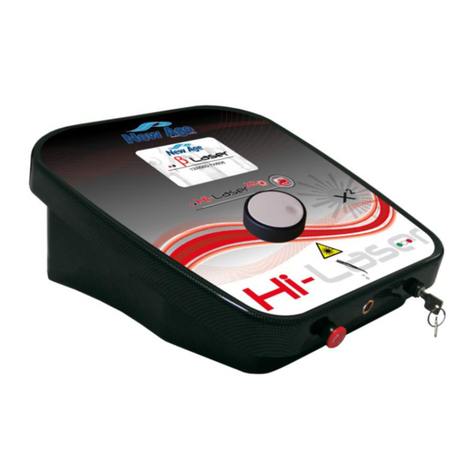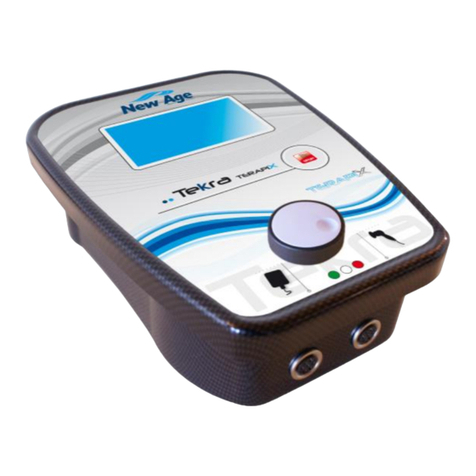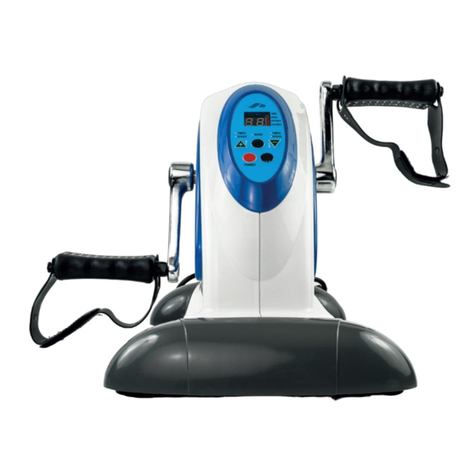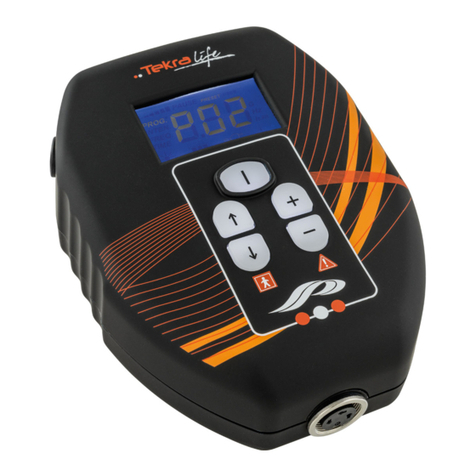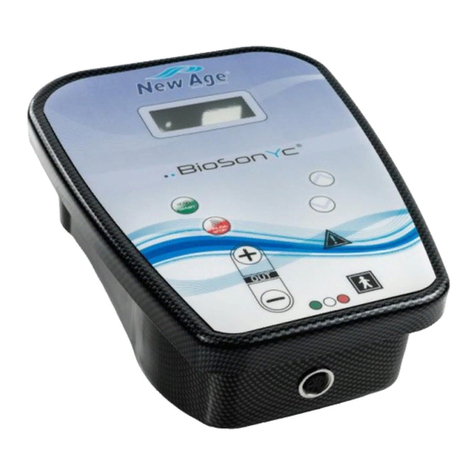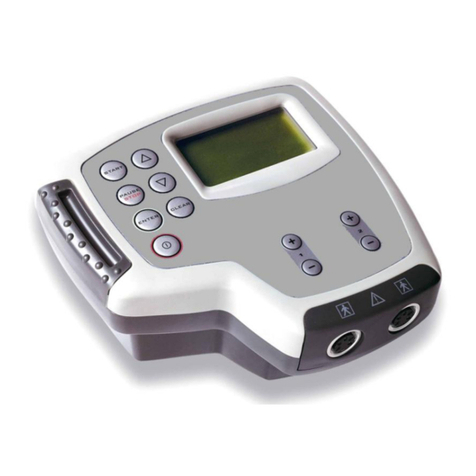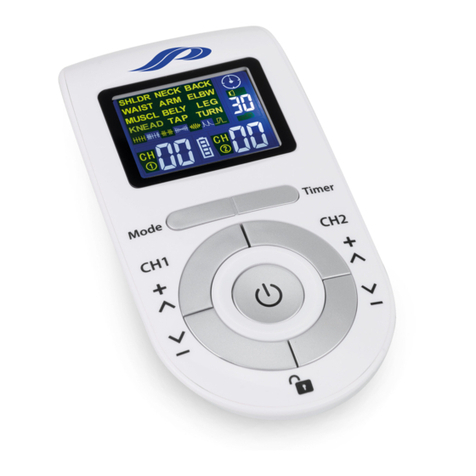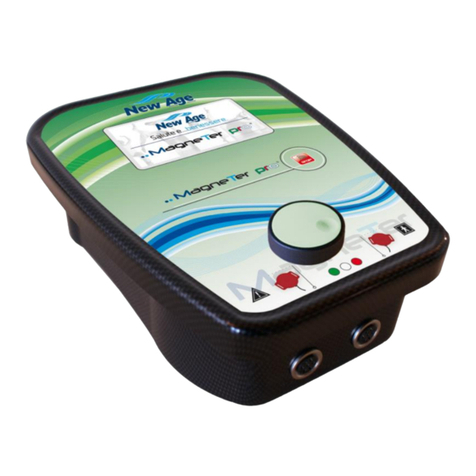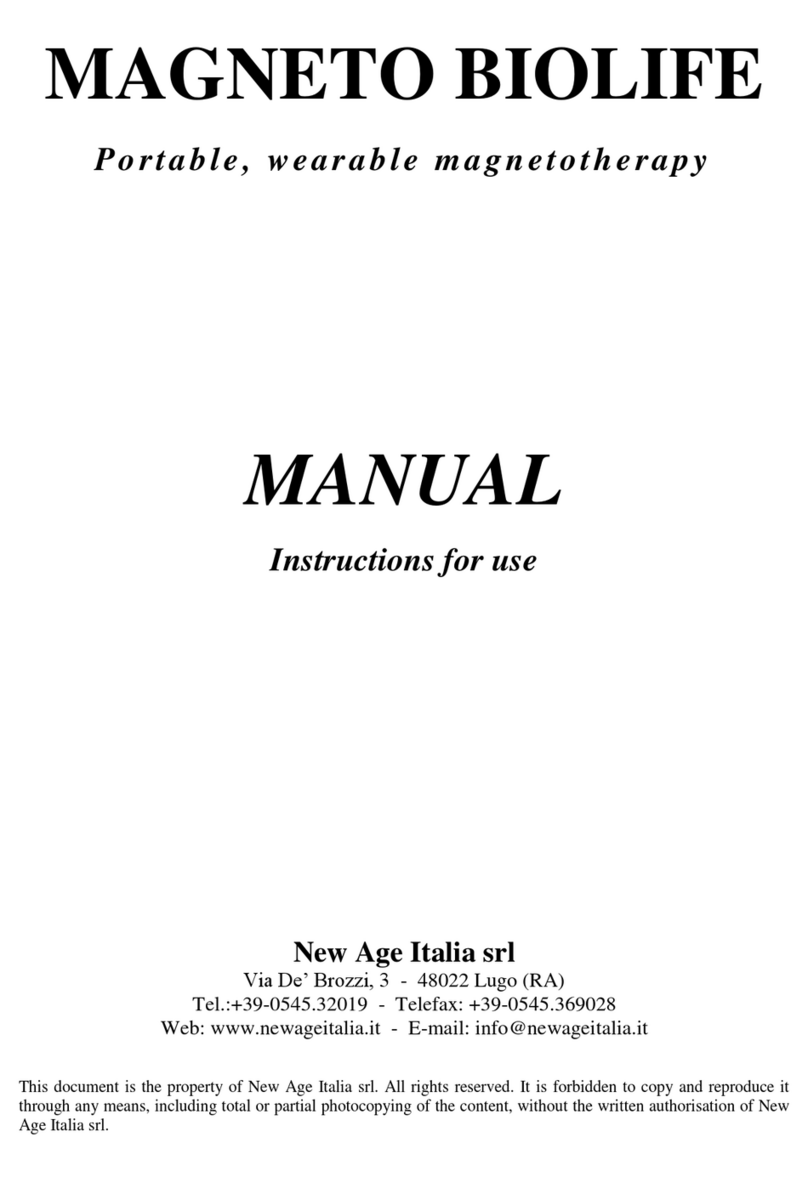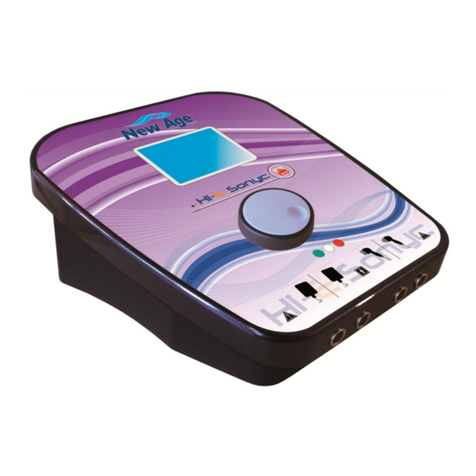
Rev. No.2, 07/06/16
Chap. 1 - INTRODUCTION
1.1 –What is Ionecare?
Ionecare is a new portable iontophoresis system for everyday wellbeing that is
particularly suitable for treating the commonest forms of pain. The memory contains
20 preset iontophoresis and microcurrent treatment programmes.
Ionecare has two independent channels for connecting up to four electrodes to
stimulate two different parts of the body simultaneously. The unit can also be used
on two different persons at the same time, adjusting the treatment intensity
independently in accordance to each subject’s sensations.
1.2 –Who can use Ionecare?
Ionecare may be used by anyone who wishes to carry out specific pain relief
treatments themselves at home or while travelling. It is so easy to use that treatments
may be performed anywhere and at any time, to take full advantage of its beneficial
effects and to achieve extraordinary results.
1.3 –Applications of Ionecare
Ionecare may be used for a wide variety of applications, ranging from the analgesic
treatment of joint and muscle pains to cervical and lumbar pains, tendonitis, etc. In
addition to pain relief, Ionecare may also be used to obtain a relaxing effect.
1.4 - Iontophoresis
Iontophoresis is used to promote the migration of medicinally active compounds
into tissues in the form of ions, which cross the cutaneous barrier when a direct
current is applied.
The medications used, which are responsible for the actual effects of the treatment,
ionise in an aqueous solution and are applied either directly on the sponge, if already
in liquid form, or dissolved in distilled water first and then applied on the sponge if
in powdered form.
It is extremely important that you know the correct concentration and, unless you are
using an amphoteric compound (one with no polarity), the polarity of the medication
before starting, so that it may be applied to the sponge on the electrode of the same
polarity. Additionally, an excessively strong concentration may cause skin irritation,
whereas an excessively weak concentration may allow a predominance of parasite
ions, deposited on the skin or on poorly cleaned sponges. The effect of the
iontophoresis therapy is strictly dependent on the type of drug used and the effective
quantity that crosses the cutaneous barrier. The latter factor is determined by the
intensity of the current used, the duration of the therapy, the concentration of the
solution and the surface area of the electrode. This form of therapy, which is used in
a wide variety of medical areas, is indicated for the treatment of pathologies of
structures located close to the skin and not surrounded by substantial layers of











